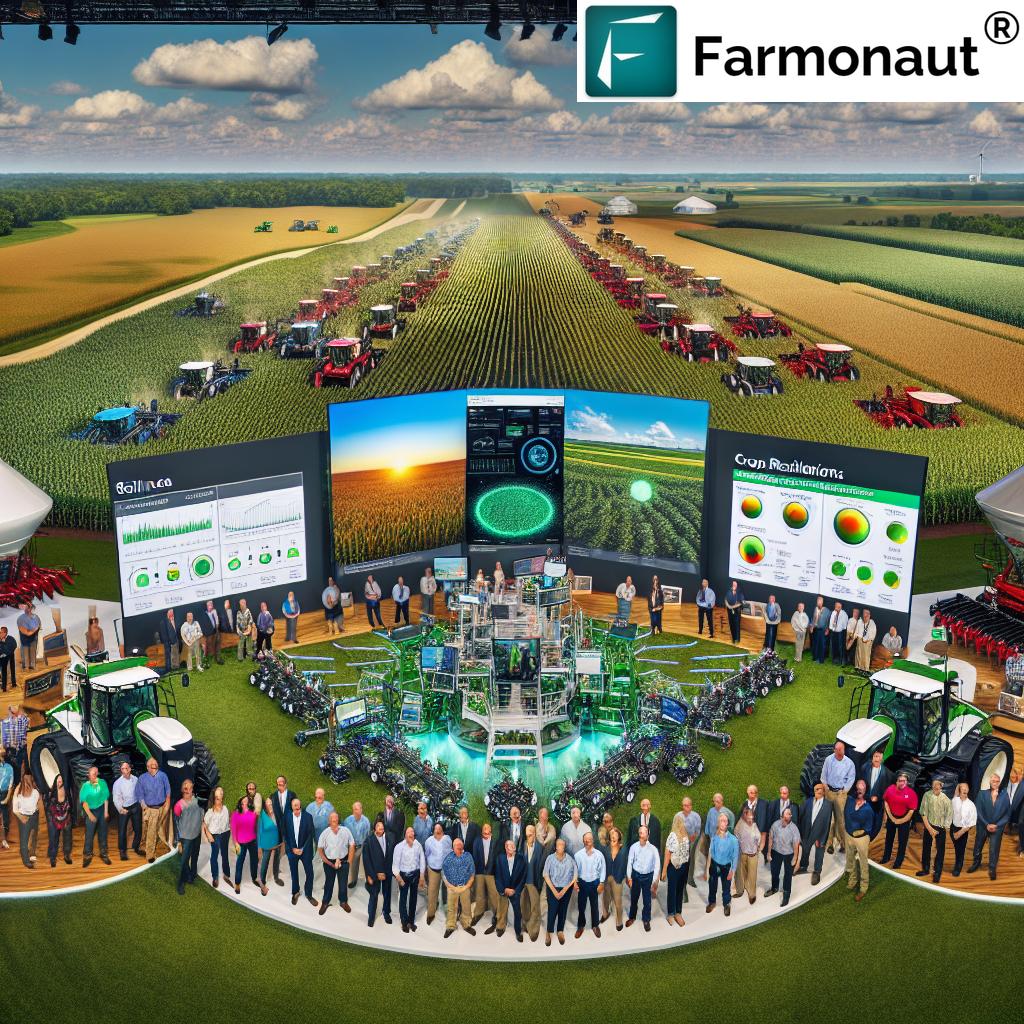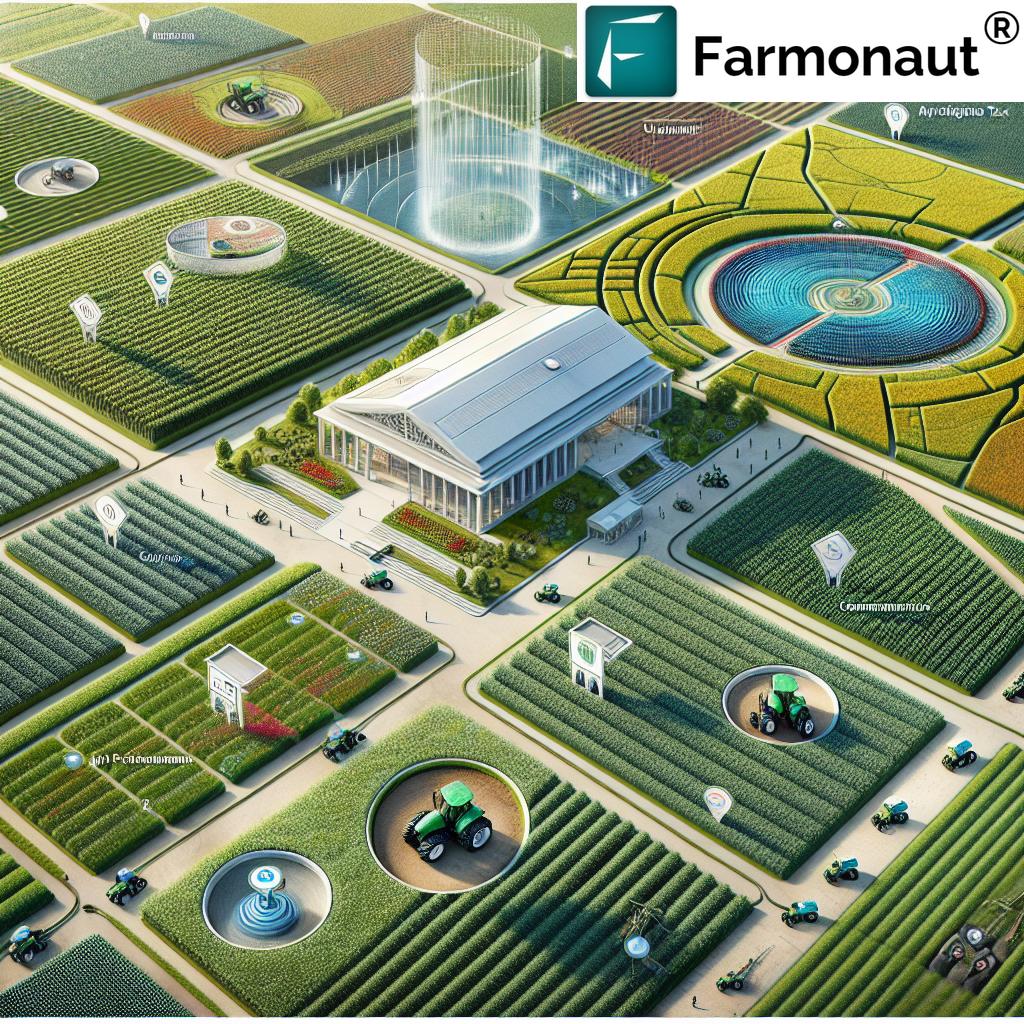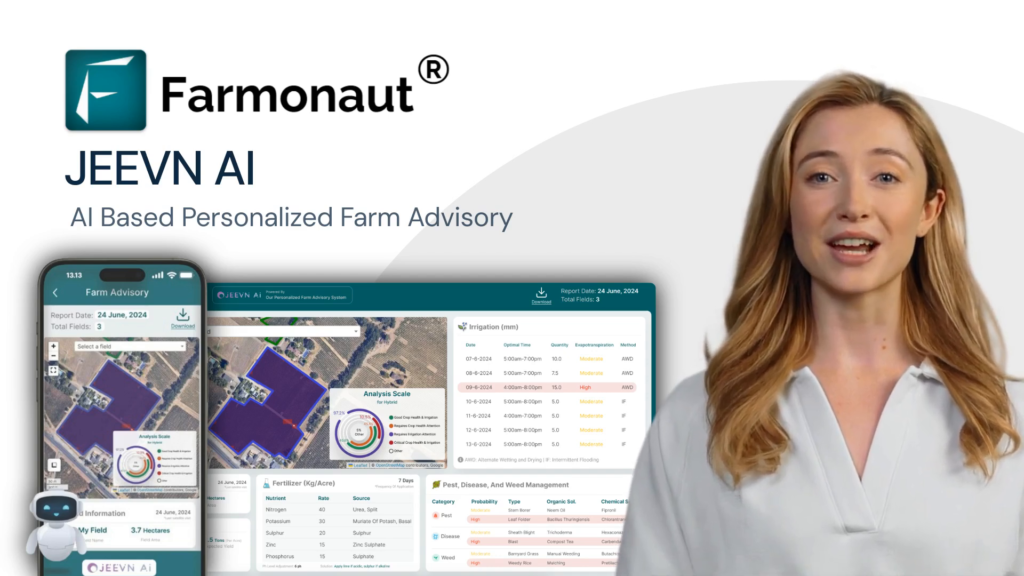2017 Ohio Farm Science Review: Navigating Agricultural Challenges and Innovations in the Midwest
“The 2017 Ohio Farm Science Review attracted over 100,000 attendees, showcasing advancements in precision agriculture and crop resilience.”
Welcome to our comprehensive coverage of the 2017 Ohio Farm Science Review, a pivotal event in the agricultural calendar that brought together farmers, industry experts, and innovators from across the Midwest. In this blog post, we’ll delve into the cutting-edge technologies, pressing challenges, and groundbreaking solutions that were at the forefront of this year’s review. From precision agriculture techniques to crop resilience advancements, we’ll explore how these innovations are reshaping the future of farming in Ohio and beyond.
The Pulse of Midwest Agriculture
The Farm Science Review has long been a barometer for the state of agriculture in the Midwest, and the 2017 edition was no exception. As we navigated the expansive grounds of the review, it became clear that the agricultural community is at a crossroads, facing both unprecedented challenges and exciting opportunities.

Precision Agriculture: The New Frontier
One of the most prominent themes at this year’s review was the rapid advancement of precision agriculture techniques. We witnessed demonstrations of state-of-the-art GPS-guided tractors, drones for crop monitoring, and sophisticated soil sensors that promise to revolutionize how farmers manage their fields.
- GPS-guided machinery for precise planting and harvesting
- Drone technology for real-time crop health assessment
- IoT sensors for soil moisture and nutrient monitoring
These technologies are not just futuristic concepts; they’re becoming essential tools for modern farmers looking to optimize their yields and reduce resource waste. The integration of these precision agriculture techniques is helping farmers make data-driven decisions, leading to more efficient use of water, fertilizers, and pesticides.
For those interested in exploring cutting-edge agricultural technology, Farmonaut’s web application offers a comprehensive suite of tools for precision farming.
Crop Resilience: Adapting to a Changing Climate
Climate change and extreme weather events pose significant challenges to Midwest farmers. At the Farm Science Review, we saw a strong focus on crop resilience advancements. Researchers and seed companies showcased new crop varieties engineered to withstand drought, resist pests, and thrive in changing climate conditions.
- Drought-resistant corn hybrids
- Soybean varieties with enhanced disease resistance
- Cover crop strategies for soil health improvement
These innovations are crucial for ensuring food security and maintaining farm profitability in the face of increasingly unpredictable weather patterns. The emphasis on resilience is not just about surviving adverse conditions but thriving in them.
Modern Farming Equipment: Efficiency Meets Innovation
The exhibition of modern farming equipment was nothing short of impressive. From combine harvesters with built-in grain analyzers to smart sprayers that can distinguish between crops and weeds, the machinery on display represented the pinnacle of agricultural engineering.
- Self-driving tractors with AI-powered navigation systems
- Robotic milking systems for dairy farms
- Advanced irrigation systems with precision water delivery
These technological marvels are designed to increase efficiency, reduce labor costs, and minimize environmental impact. While the initial investment in such equipment can be substantial, the long-term benefits in terms of productivity and sustainability are undeniable.
Farmonaut’s Cutting-Edge Solutions
Among the innovative technologies showcased at the review, Farmonaut’s satellite-based crop protection and field management solutions stood out for their potential to transform farm operations. By leveraging advanced satellite imagery and AI, Farmonaut offers farmers unprecedented insights into their crops’ health and field conditions.
- Real-time crop health monitoring using satellite data
- AI-powered advisory system for personalized farming strategies
- Resource management tools for optimizing water and fertilizer use
These solutions are particularly valuable for farmers looking to implement precision agriculture practices without the need for expensive on-ground sensors or equipment. Farmonaut’s technology democratizes access to advanced farming techniques, making them available to farms of all sizes.
Explore Farmonaut’s solutions:
Agricultural Community Challenges
While the Farm Science Review showcased numerous technological advancements, it also provided a platform to discuss the pressing challenges facing the agricultural community. Some of the key issues addressed included:
- The impact of weather extremes on harvest schedules and crop yields
- Rising input costs and fluctuating commodity prices
- Labor shortages and the need for skilled workers in modern agriculture
- Regulatory challenges and compliance with environmental standards
These discussions highlighted the complex interplay of factors affecting modern farming and the need for holistic solutions that address both technological and socio-economic aspects of agriculture.
Enhancing Farm Safety Measures
Farm safety was a critical topic at the review, with several exhibits and workshops dedicated to promoting safer farming practices. The agricultural sector continues to be one of the most hazardous industries, and there was a strong emphasis on adopting new technologies and protocols to reduce accidents and injuries.
- Advanced personal protective equipment (PPE) for chemical handling
- Rollover protection systems for tractors and other machinery
- Smart sensors for detecting hazardous gas levels in confined spaces
- Training programs for proper equipment operation and maintenance
These safety innovations are crucial for protecting the well-being of farmers and farm workers, ensuring that as agriculture becomes more technologically advanced, it also becomes safer.

Weather Impact on Harvest: Strategies for Resilience
The unpredictable nature of weather and its significant impact on harvest was a hot topic at the Farm Science Review. Farmers shared experiences and experts offered advice on mitigating weather-related risks:
- Implementing diverse crop rotation strategies to spread risk
- Utilizing climate-smart agriculture techniques
- Investing in on-farm storage to manage harvest timing
- Adopting precision irrigation systems for water management
These strategies highlight the importance of adaptability in modern farming. By leveraging technology and data-driven decision-making, farmers can better prepare for and respond to weather challenges.
“Agricultural property tax reductions discussed at the event could potentially save Ohio farmers millions of dollars annually.”
Agricultural Property Tax Reductions: A Financial Lifeline
One of the most significant policy discussions at the review centered around potential agricultural property tax reductions. This topic garnered substantial attention from Ohio farmers, who have been grappling with rising operational costs.
- Proposed changes to the Current Agricultural Use Value (CAUV) formula
- Impact of tax reductions on farm profitability and sustainability
- Balancing tax relief with funding for rural schools and services
The potential tax reductions represent a crucial financial lifeline for many farmers, potentially freeing up capital for investment in new technologies and farm improvements. However, the implications for local government funding and services remain a point of debate.
Soybean Improvement Research: Boosting Yields and Quality
Soybeans, a cornerstone crop for Midwest agriculture, were the subject of extensive research presentations at the Farm Science Review. Scientists and agronomists shared exciting developments in soybean genetics and cultivation practices:
- New high-yielding soybean varieties with enhanced protein content
- Advancements in pest and disease resistance through genetic engineering
- Precision planting techniques for optimal soybean growth
- Innovative harvesting methods to reduce crop loss
These research efforts are crucial for maintaining the competitiveness of U.S. soybeans in the global market and ensuring the long-term viability of soybean farming in the Midwest.
Renewable Energy in Farming: Powering the Future
The integration of renewable energy sources in agriculture was a prominent theme at the review. Farmers and energy experts explored various ways to reduce dependency on fossil fuels and create more sustainable farm operations:
- Solar panels for powering irrigation systems and farm buildings
- Wind turbines for on-farm electricity generation
- Biogas digesters for converting agricultural waste into energy
- Electric and hybrid farm equipment for reduced emissions
These renewable energy solutions not only offer environmental benefits but also present opportunities for farmers to reduce long-term energy costs and even generate additional income through energy production.
The State of Commodity Markets: Navigating Uncertainty
The Farm Science Review provided a platform for in-depth discussions on the state of commodity markets, a topic of critical importance to Midwest farmers. Market analysts and agricultural economists offered insights into current trends and future projections:
- Analysis of global supply and demand for key crops like corn and soybeans
- Impact of international trade policies on U.S. agricultural exports
- Strategies for hedging against market volatility
- Emerging markets and diversification opportunities for farmers
Understanding these market dynamics is crucial for farmers making decisions about crop planning, investment in new technologies, and overall farm management strategies.
Innovative Approaches to Farm Management
Efficient farm management was a recurring theme throughout the review, with a focus on integrating technology and data analytics into daily operations. Several innovative approaches were highlighted:
- Farm management software for comprehensive operational oversight
- Blockchain technology for improved supply chain transparency
- Predictive analytics for crop yield forecasting and risk assessment
- Automated record-keeping systems for regulatory compliance
These management tools are enabling farmers to make more informed decisions, streamline their operations, and adapt quickly to changing market conditions.
For those interested in leveraging technology for farm management, Farmonaut’s API offers powerful tools for integrating satellite data into existing farm management systems.
The Role of Education and Extension Services
The Farm Science Review also emphasized the critical role of education and extension services in supporting the agricultural community. Several initiatives were highlighted:
- Partnerships between universities and farms for on-site research
- Continuing education programs for farmers on new technologies and practices
- Youth engagement programs to encourage the next generation of farmers
- Online learning platforms for remote access to agricultural expertise
These educational efforts are essential for ensuring that farmers have access to the latest knowledge and can effectively implement new technologies and practices on their farms.
Key Agricultural Innovations Showcased at 2017 Ohio Farm Science Review
| Technology/Innovation | Application Area | Potential Impact on Farming |
|---|---|---|
| Precision Agriculture Tools | Field mapping, variable rate application | High – Improved resource efficiency and yield |
| Crop Resilience Advancements | Drought and pest-resistant crop varieties | High – Enhanced crop survival and yield stability |
| Modern Farming Equipment | Automated planting and harvesting | Medium – Increased efficiency, reduced labor costs |
| Farmonaut’s Crop Protection Solutions | Satellite-based crop monitoring | High – Early detection of crop issues, optimized management |
Looking to the Future: Emerging Trends in Agriculture
As we reflect on the wealth of information and innovation showcased at the 2017 Ohio Farm Science Review, it’s clear that the agricultural sector is on the cusp of a technological revolution. Some of the emerging trends that are likely to shape the future of farming include:
- Artificial Intelligence and Machine Learning in farm decision-making
- Vertical farming and urban agriculture solutions
- Gene editing technologies for crop and livestock improvement
- Increased integration of IoT devices in farm operations
- Blockchain technology for improved traceability and food safety
These trends highlight the ongoing convergence of agriculture with cutting-edge technology, promising to create more efficient, sustainable, and productive farming systems in the years to come.
Conclusion: Embracing Innovation for a Sustainable Agricultural Future
The 2017 Ohio Farm Science Review served as a powerful reminder of the resilience and innovative spirit of the Midwest agricultural community. From precision agriculture techniques to groundbreaking crop resilience research, the event showcased the myriad ways in which technology is transforming farming practices.
As we move forward, it’s clear that embracing these innovations will be crucial for addressing the challenges of climate change, market volatility, and increasing global food demand. The integration of technologies like those offered by Farmonaut, combined with sustainable farming practices and supportive policies, will be key to ensuring a prosperous and sustainable future for Midwest agriculture.
We encourage all farmers, agribusinesses, and agricultural enthusiasts to stay informed about these technological advancements and consider how they can be implemented in their own operations. The future of farming is here, and it’s more exciting and full of potential than ever before.
For more information on how you can leverage cutting-edge agricultural technology in your farming operations, visit Farmonaut’s web application or explore our API Developer Docs for integration options.
FAQ Section
Q: What were the main themes of the 2017 Ohio Farm Science Review?
A: The main themes included precision agriculture techniques, crop resilience advancements, modern farming equipment, and innovative solutions for farm management and crop protection.
Q: How can farmers benefit from the technologies showcased at the review?
A: Farmers can benefit through increased efficiency, improved crop yields, better resource management, and enhanced decision-making based on real-time data and analytics.
Q: What role does Farmonaut play in modern agriculture?
A: Farmonaut offers satellite-based crop monitoring and field management solutions, providing farmers with valuable insights for optimizing their operations and improving crop health.
Q: How is climate change affecting Midwest agriculture, and what solutions were presented?
A: Climate change is causing more extreme weather events and unpredictable growing conditions. Solutions presented included drought-resistant crop varieties, precision irrigation systems, and climate-smart farming practices.
Q: What are some emerging trends in agricultural technology?
A: Emerging trends include AI and machine learning in farm management, vertical farming, gene editing for crop improvement, increased use of IoT devices, and blockchain for supply chain transparency.
















